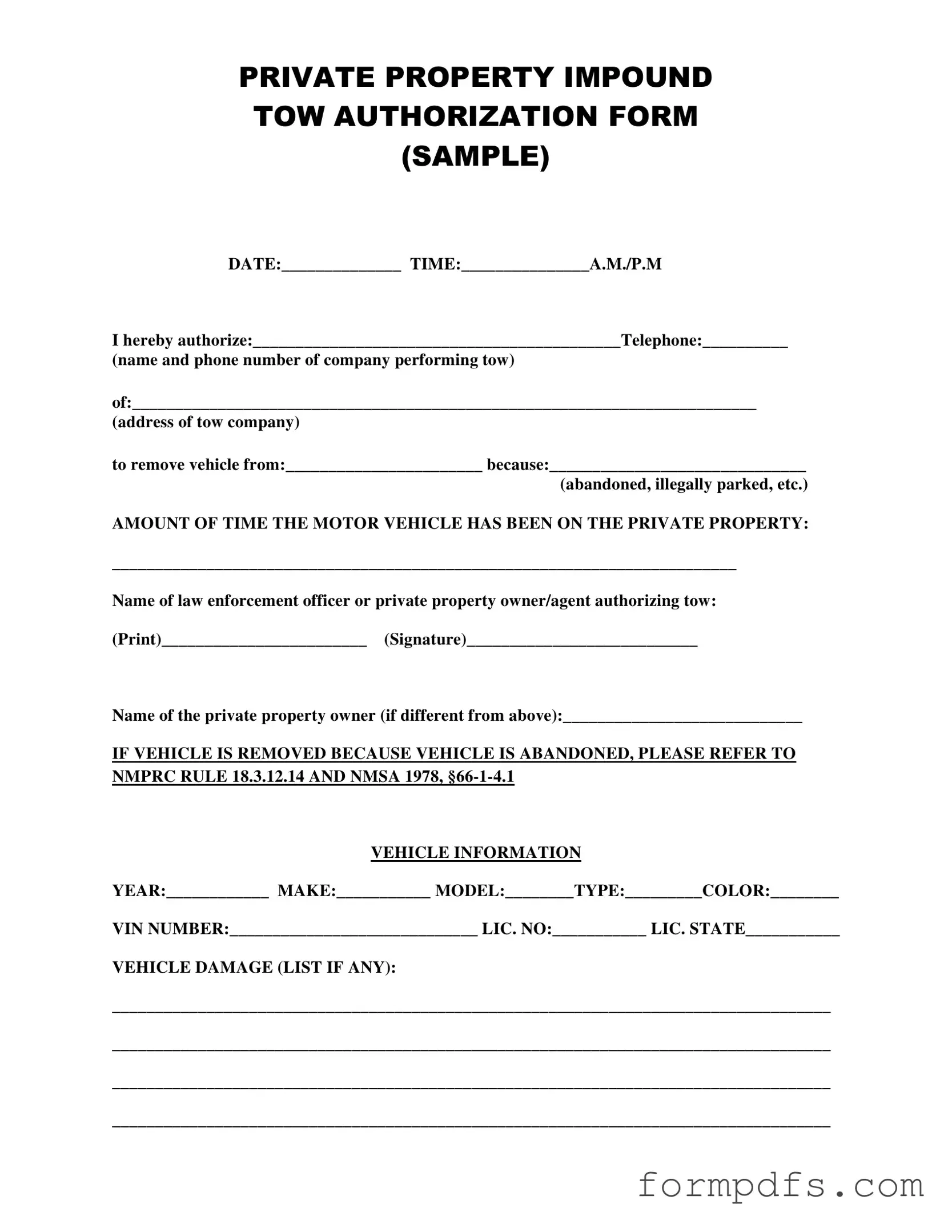What is a Tow Authorization form and why is it important?
The Tow Authorization form serves as a legal document that grants permission for a towing company to remove a vehicle from private property. This form is essential because it protects the rights of property owners while ensuring that towing companies have the necessary authorization to act. By completing this form, property owners can document the reason for the tow, such as abandonment or illegal parking, and provide details about the vehicle in question. This helps prevent disputes and ensures that the towing process is conducted lawfully.
What information is required on the Tow Authorization form?
To complete the Tow Authorization form, several key pieces of information must be provided. First, the date and time of the tow must be noted. Next, the name and contact information of the towing company, along with its address, should be included. Additionally, the form requires the location from which the vehicle will be towed and the reason for the tow. Property owners must also indicate how long the vehicle has been on the property. Finally, the form should be signed by the property owner or their authorized agent, along with any relevant law enforcement officer, if applicable. This comprehensive information helps ensure clarity and legality in the towing process.
What should I do if my vehicle has been towed?
If your vehicle has been towed, the first step is to locate the towing company responsible for the tow. This information is often available through local law enforcement or community resources. Once you find the towing company, contact them to determine the reason for the tow and any associated fees. It’s important to have your vehicle information handy, such as the make, model, and license plate number. If you believe the tow was unjustified, you may have the right to contest it. Gather any evidence that supports your case, such as photographs or witness statements, and consider reaching out to local authorities or legal counsel for guidance.
Are there any regulations governing towing on private property?
Yes, there are specific regulations that govern towing on private property, which can vary by state and locality. In many jurisdictions, property owners must follow certain procedures to authorize a tow, including posting clear signage that indicates towing policies. Additionally, some areas have laws that dictate how long a vehicle must be parked illegally before it can be towed. In New Mexico, for example, the NMPRC Rule 18.3.12.14 and NMSA 1978, §66-1-4.1 provide guidelines regarding abandoned vehicles. Understanding these regulations can help property owners and vehicle owners alike navigate the towing process more effectively and legally.
